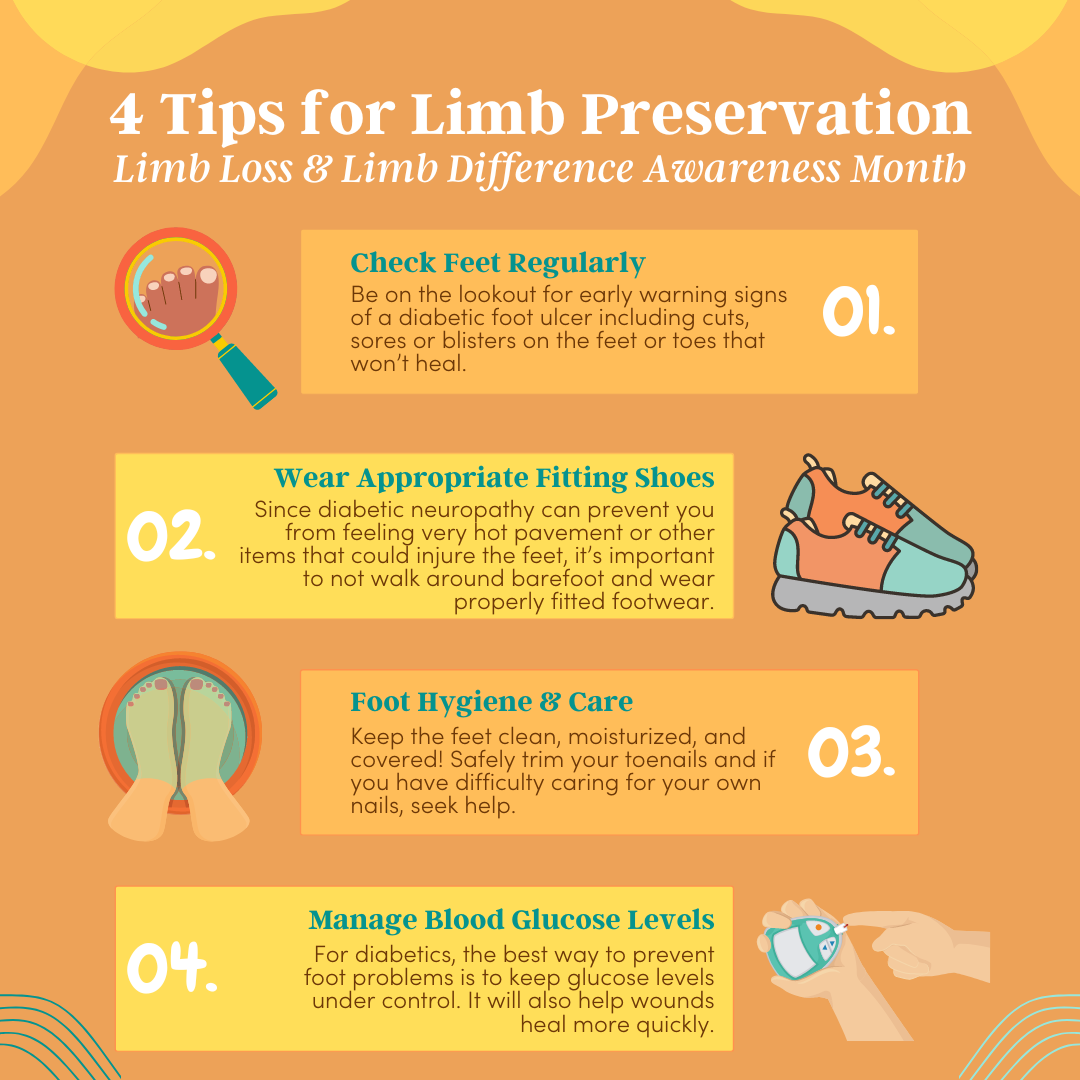April is Limb Loss Awareness Month- For Patients with Diabetes and Chronic Wounds, Amputations Can Be Prevented
April 1, 2023

April is Limb Loss and Limb Difference Awareness Month, a time to educate the community about limb preservation and emphasize the importance of early evaluation and treatment to prevent amputations.
Of the estimated 150,000 lower limb amputations performed in the U.S. each year, approximately 82 percent stem from a diabetic foot ulcer. When a patient with diabetes fails to keep blood glucose levels under control, a lack of blood flow to the lower limbs can result in the development of ulcerations or open sores. Symptoms include redness, increased warmth or firmness around the wound, swelling, extra drainage, pus or odor.
Some patients with diabetes also develop peripheral neuropathy, or a loss of sensation in the lower limbs and feet. A simple cut or scrape can remain undetected and quickly develop into a severely infected wound. Patients often find themselves in the ER with a systemic infection and need urgent treatment.
It’s important for anyone with diabetes or cardiovascular disease to examine their feet and legs daily. If a wound does not heal on its own within 30 days, the risk of amputation and early death increases. In fact, a recent study shows that lower limb amputations have a three-year mortality risk of 71 percent.
Wound treatment typically includes debridement, or the removal of dead tissue, management of the infection with the application of advanced wound care dressings or medications, off-loading or taking pressure off the area, and of course, keeping blood glucose levels under control. When a wound still does not respond to standard treatment, hyperbaric oxygen therapy may be indicated.
It’s important to be proactive and examine the feet and legs every day. Here are four tips for limb preservation, particularly for individuals with diabetes:
- Be on the lookout for early warning signs of a diabetic foot ulcer including cuts, sores or blisters on the feet or toes that won’t heal.
- Wear appropriate shoes! Since diabetic neuropathy can prevent you from feeling very hot pavement or other items that could injure the feet, it’s important to not walk around barefoot and wear properly fitted footwear.
- Keep the feet clean, moisturized, and covered! Safely trim your toenails and if you have difficulty caring for your own nails, seek help.
- Manage blood glucose levels. For diabetics, the best way to prevent foot problems is to keep glucose levels under control. It will also help wounds heal more quickly.
The Trios Hyperbaric and Wound Care Clinic consists of a multidisciplinary team of specialists dedicated to healing wounds, saving limbs, and improving the lives of our patients. For more information or to schedule an appointment, call 509.221.6300.
